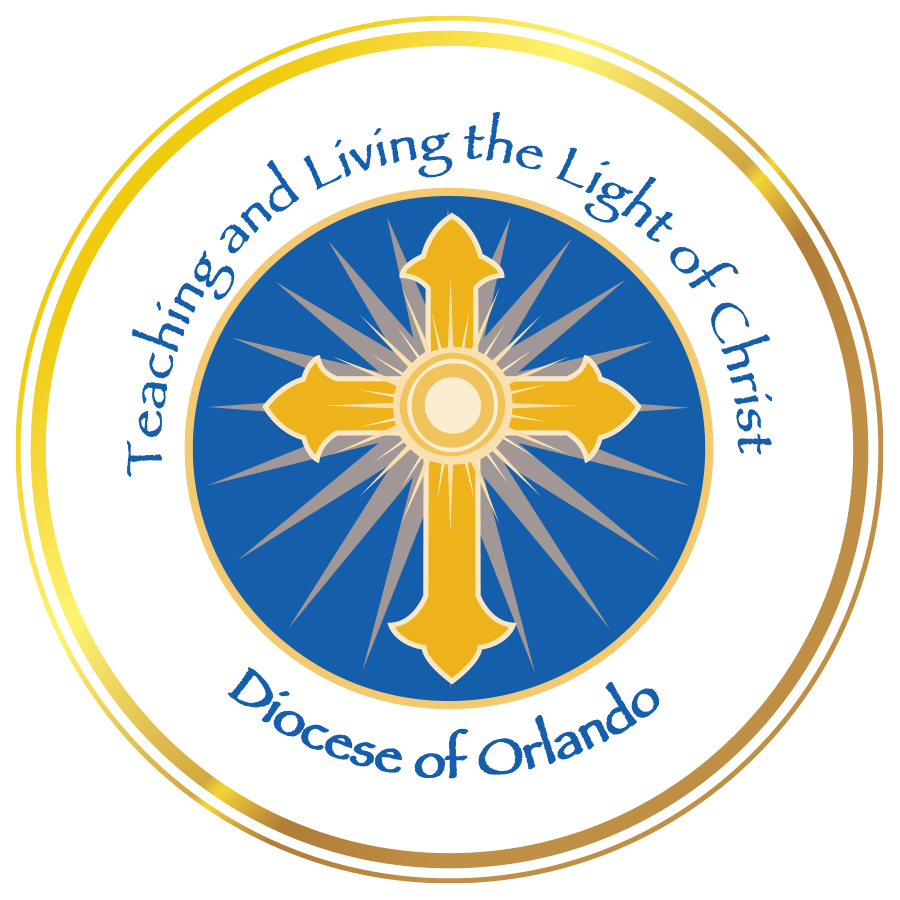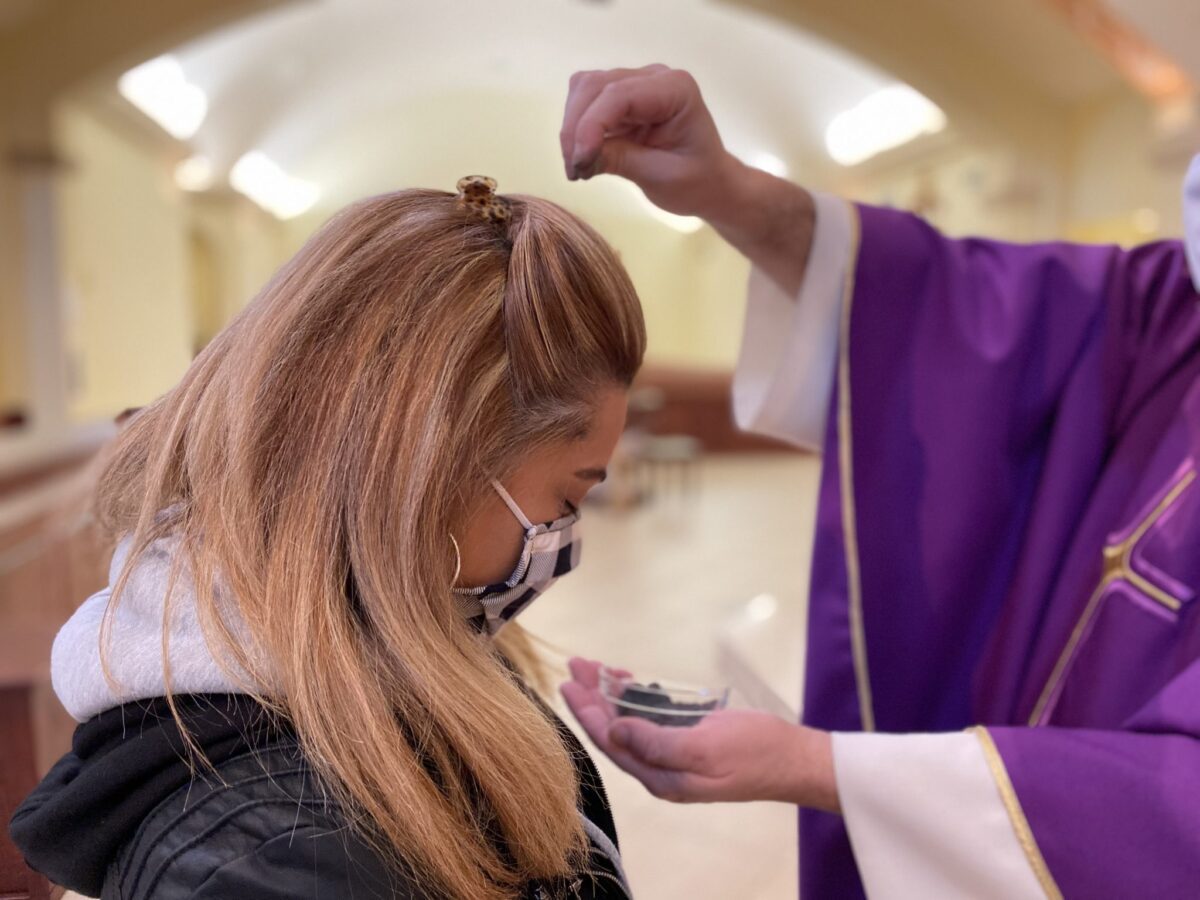ORLANDO | A year after churches were closed for public worship just in the third week of Lent, Catholics face another Lent during pandemic times. As we embrace the Cross during the Lenten season, God also gave us the pandemic to embrace the Cross as we receive it. Now a year later, we are offering ourselves to God in this humbled state, perhaps understanding our focus is about the essentials—about God among us and how we live the glory of that Gift each day, said Bishop John Noonan.
Catholics can expect much of the same “repertoire of safety” this Lenten season, according to Bruce Croteau, director of liturgy for the Diocese of Orlando and St. James Cathedral. He said Catholics celebrating Mass will remain socially distant, wearing masks. Small groups will continue to meet according to safety protocols. The usual devotions of Lent such as the Stations of the Cross will continue, perhaps with various creative virtual opportunities for prayer. The liturgies of the Sacred Triduum will also most likely be impacted, although at this time, nothing is official. Perhaps the most noticeable change will come on Ash Wednesday.
On January 12, Archbishop Leonard Blair, Chair of the Bishops’ Committee on Divine Worship, issued a memorandum to all Bishops of the United States. He wrote, “While Ash Wednesday is not a holy day of obligation and while there is no requirement for the clergy and faithful to receive the imposition of ashes, it is rightly observed as a celebration of high importance, and many will surely wish to participate even amid the current difficulties.” Anticipating large attendance, in the interest of safety, Archbishop Blair shared the Holy See’s modified method of distributing ashes during a pandemic, provided by the Congregation for Divine Worship and Discipline of the Sacraments.
According to the modified method, the priest will bless the ashes with holy water, then address the congregation as a whole. As per the Roman Missal, he will say, “Repent, and believe in the Gospel”, or “Remember that you are dust, and to dust you shall return”. The priest will then cleanse his hands, put on a face mask and distribute the ashes …” As done in many countries, including at the Vatican, the ashes will be “sprinkled” on the top of the head rather than imposed on the forehead.
“The ashes are a sacramental. They help us be more in touch with the rituals of our faith; they are spiritual tools,” explained Croteau. Like water and its recollection of our Baptism, “sacramentals lead us to the Sacraments… When used in ritual, the ashes become a sign of inner conversion,” he said. That inner conversion also gives us courage to spread the Good News with those we meet.
Phyllis Milmore of Most Precious Blood Parish in Oviedo recalls several instances when the ashes prompted questions from non-Catholics and offered an opportunity for evangelization. Last Ash Wednesday, after participating in the celebration of Mass at Most Precious Blood and receiving ashes, Milmore brought some items over to a local charitable organization that helps those in need. The young man who helped unload her car mentioned the “dirt” on her forehead. This led to a 5-minute conversation about Lent and Church. “I felt blessed and an inner joy when I realized that God had given me the opportunity to share my Catholic faith and that I had not been afraid to take it,” she said.
The tradition of placing ashes on one’s person pre-dates Jesus. In Gen. 3:19, after the fall, God says to Adam, “You are dust and to dust you shall return,” –the phrase we hear repeated each Ash Wednesday. It is a symbol of our mortality. Later, in Job 42:6, Job repents “in dust and ashes,” symbolizing mortality and repentance. Ashes also represent intercession. In Daniel 9:3, as Daniel prays for his people, his penance takes the form of fasting, ashes, and sackcloth. As the Maccabees entered an intense time of prayer, 1 Maccabees 3:47 states: “They fasted that day, and they put on sackcloth and sprinkled ashes on their heads, and rent their clothes.” The Church Fathers frequently refer to these examples, but it was not until 1091 that Pope Urban II recommended both clergy and laity continue the practice, so the rite of blessing and imposing the ashes became an important part of liturgical life.
The ritual of sprinkling ashes recognizes we are sinners in need of repentance and this life is only preparation for eternity. Croteau notes the pandemic is providing us an opportunity to greater appreciate our faith. “How can you take a year of lived experience, of sacrifice, illness, death – and once it’s over go back to normal? You don’t want to do that. It’s the nature of paschal living. You’re different at the end.” Although the pandemic is not over, he alludes to the interior transformation to which all are called during Lent. Looking ahead he said, “Hopefully it will be a world where the sufferings and pain of this past year will be transformed into new life, because that’s what Christ does for us.”
Bishop Noonan points out, “The first reading of Scripture from Joel for the first day of the season of Lent calls us to draw near to God, ‘Even now, says the LORD, return to me with your whole heart.’ Hopefully our journey during God’s time teaches us the reality of offering ourselves wholly, entirely to God that no matter the season, we live as His holy people.”
By Glenda Meekins of the Florida Catholic, February 05, 2021

